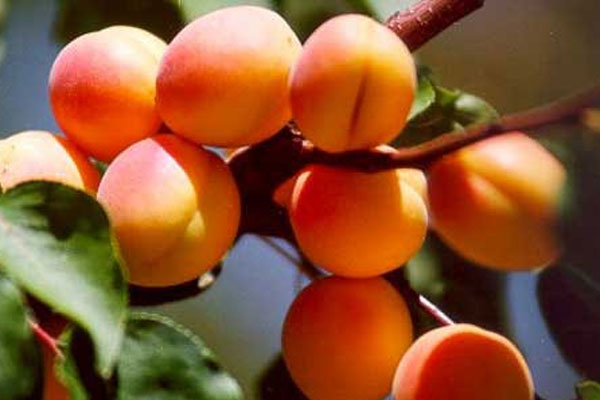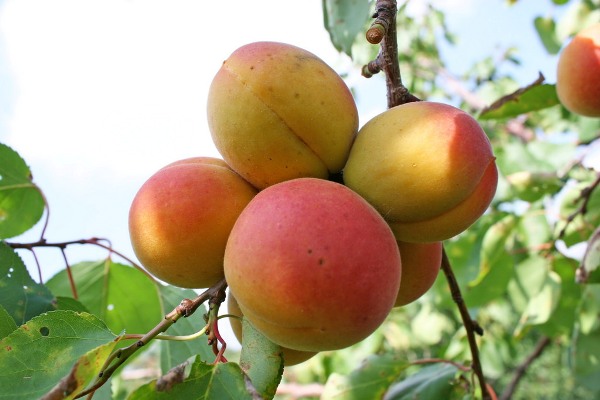Review of apricot varieties for central Russia
Content
Description of varieties
Northern triumph
Back in the 19th century, the famous scientist IV Michurin began work on the creation of frost-resistant hybrids of apricot varieties that could quickly and well acclimatize in central Russia. One of the best varieties, which many gardeners have long been able to appreciate at its true worth, is the Northern Triumph fruit tree. This apricot, which can be grown today in central Russia, is a tree with a luxurious crown.
With proper care, this variety can feel good in almost any weather without any problems, not excluding severe frosts, it is also not afraid of all kinds of diseases or pests. This apricot variety is self-pollinated, so it can be planted separately from other species. An adult plant begins to bear fruit in three years, their amount can be about 60 kg from each apricot. Ripening with proper care falls from mid-July to mid-August. The large fruit of this type of tree can reach a weight of about 55 g and have a pleasant yellow-orange color.
Alyosha
Another variety that is well suited for central Russia is the Alyosha fruit tree. Such an apricot, subject to proper planting and normal care, can grow up to four meters, it is characterized by the presence of a huge round crown. Its fruits are not too large, their weight is about 20 grams. On apricots of a rich yellow color, you can see a small fluff, they are slightly flattened. On the surface of the fruit, the presence of dots and reflections characteristic of this variety is noted.
A fruit tree of this type, which is great for planting today in central Russia, is able to delight its owner with a large harvest and tolerate winter frosts normally. The fruits have the property of being well preserved for a long time. Alyosha apricots are distinguished by their exquisite sweet and sour taste. When caring for the garden in which the cultivation of this type of plant is carried out, no special agricultural technology is needed. The main condition is collection of fruits on time.
Snigirek
This one of the best varieties of apricot stands out among other fruit crops suitable for the middle belt for its high level of frost resistance. It is a rather small tree, reaching about 150 cm in length, which, with proper care, ripens in mid-August. At this time, about 10 kg of fruits can be harvested from each apricot, the weight of which reaches 18 g. They are distinguished by a characteristic cream-colored skin and a crimson blush, have a dense center in consistency, have an average sugar content and a wonderful taste. With a good winter shelter, such a variety can be grown even in the northern regions and in the Urals.
Cup
The next variety that will feel good in the middle lane is an apricot with an interesting name Cup. This tree is very small, it can grow to a height of no more than one and a half meters.Its name comes from the characteristic cup-shaped crown. This is an excellent winter-hardy hybrid that does not need any special care, bears fruit annually and in large quantities. They weigh about 30 g and have beautiful creamy yellow skin and blush. The pulp of such fruits is characterized by a loose structure, has a delicate sweet taste.
Iceberg
This apricot variety was bred in 1986. Its height can be about three meters, and annual shoots are quite branched, flowers are also large in size. Such trees have characteristic large oval-shaped fruits, the weight of which can be up to 22 grams, yellow-orange color, thin skin, the presence of dots on the surface is permissible. The bone is easily separated from the core. Sugars are present in fruits about 8, 7%, and in 100 grams. fruit contains 360 mg. potassium. Grafted plants, with proper care, begin to bear fruit no earlier than three years later. The harvest time falls at the beginning of August. Such fruit trees are distinguished by a high degree of frost resistance. Iceberg apricots are stored well enough; it is customary to use them both fresh and as compotes, preserves, and for preservation.
Aquarius
Another variety that can be grown on your site in the middle zone of the country is Aquarius. It is a seedling of the Lel variety obtained from free pollination. LA Kramarenko was singled out, and the institution is the originator of the Main Botanical Garden. Aquarius is a tall, up to 6 meters long, well-developed tree with medium-sized flowers and low-branched annual shoots. The fruits are round in shape with a characteristic seam and weigh about 30 g.
They are not as shiny as the Lel variety, they have a beautiful yellow color, and a slight blush can be seen on the surface. The pulp is of medium density and delicate texture.
The taste of apricots Aquarius is pleasant, sweet and sour, expert tasting score - 4.5 points.
The chemical composition of the fruits is as follows - dry matter in them is 14.2%, sugars - 7.6%, titrated acids - 2.7%, potassium - 345 mg per 100 g. The stone is well separated from the pulp. Ripening periods are average - approximately in the second decade of August. Begins to bear fruit three years after the plants have been grafted, has a regular yield. Differs in good frost resistance.
Monastyrsky
It is a seedling of 3 generations from free pollination, isolated in 1996 by L.A. Kramarenko. In 2004 he was entered into the State Register for the Central District. It is a tree with a spreading crown, which has medium-sized flowers and moderately branched annual shoots. Fruits appear on all types of shoots. The fruits are oval in shape, slightly flattened on the sides, their weight can be up to 40 g, the skin has a lemon-yellow tint with a slight blush. The skin has a slight edge, rather rough.
The pulp is very juicy, pleasant orange color, medium consistency. The fruits received a tasting expert assessment of 3, 5 points. They have a large bone, which is almost completely separated from the pulp. The chemical composition of the fruits is as follows - dry matter about 16.9%, sugars - 8.1%, titratable acids - 2.0%, potassium - 420 mg per 100 g. cool - for the second half or the end of the month. The yield of the variety is quite high. Differs in good resistance to cold and frost. Special care for this type of plant is not required.
Tsarsky
This variety of apricot tree was obtained thanks to the efforts of specialists of the Main Botanical Garden of the Russian Academy of Sciences A.K.Skovrtsov and L.A. Kramarenko. This variety was obtained, among others, adapted to the weather conditions of the middle zone of the country. Trees can grow up to 4 meters in height, large flowers appear on them, and annual shoots have an average degree of branching.It ripens early - this time falls on the end of July - beginning of August.
The fruits of the Tsar's apricots have a very high degree of frost resistance - practice has shown that such a plant is able to withstand temperatures up to 40 degrees below zero.Possesses increased productivity and tasty fruits. Apricots of this type can be planted both in autumn and spring.The fruits reach 22 g, they are characterized by the presence of a thick yellow skin, a slight blush can be seen on the surface. The pulp of such fruits is juicy and sweet and sour; when tasting, they received a high rating of 4.5 points. They have the following chemical composition - 16.1% dry matter, 7.9% sugars, 1.6% titratable acids, 315 mg of potassium in every 100 g of fruit. The keeping quality of the variety is good. The yield can be called average, but at the same time stable.
Video "Choosing a seedling"
On how to choose the right apricot seedling, the agronomist of the NGO "Sady Rossii" tells on the recording.
